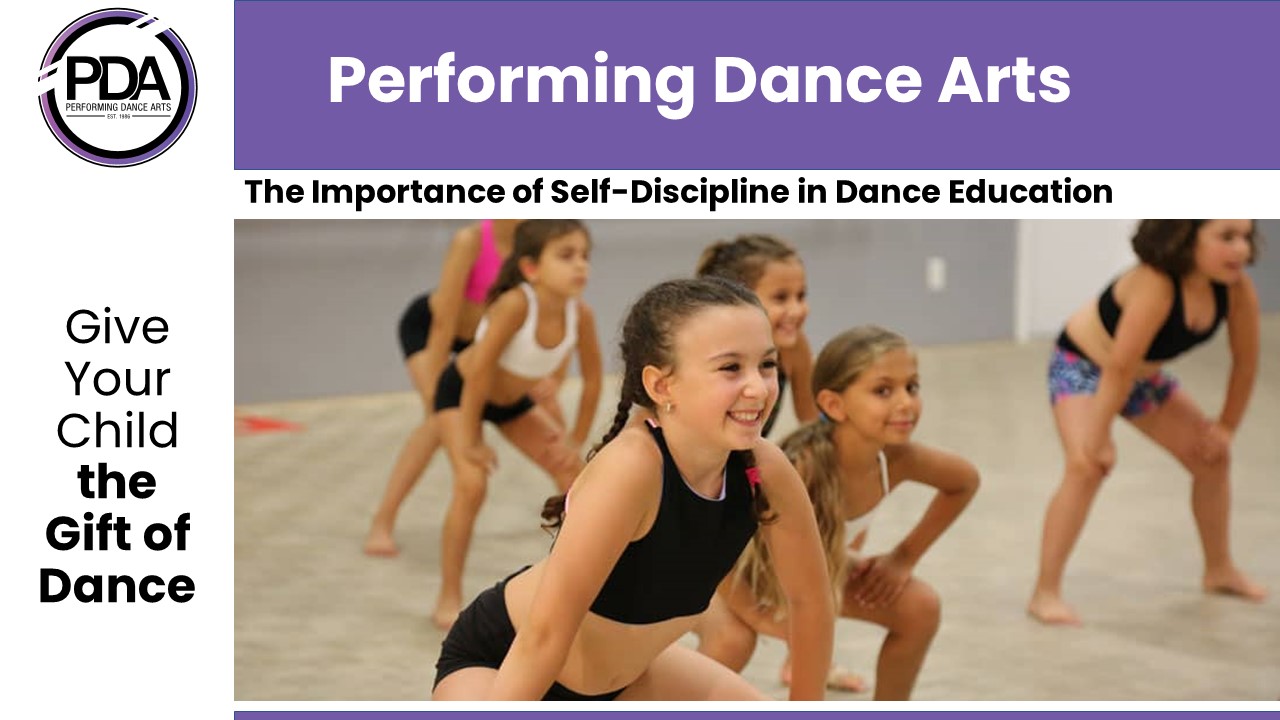CULTIVATING SELF-DISCIPLINE: HOW DANCE CLASSES TEACH KIDS SELF-DISCIPLINE - PowerPoint PPT Presentation
Title:
CULTIVATING SELF-DISCIPLINE: HOW DANCE CLASSES TEACH KIDS SELF-DISCIPLINE
Description:
It takes confidence, passion, and a lot of self-discipline to learn a new genre of dance. Here’s how dance classes for kids can benefit a child’s development. – PowerPoint PPT presentation
Number of Views:2
Title: CULTIVATING SELF-DISCIPLINE: HOW DANCE CLASSES TEACH KIDS SELF-DISCIPLINE
1
- Performing Dance Arts
- The Importance of Self-Discipline in Dance
Education
- Give Your Child theGift of Dance
2
- Understanding Self-Discipline
- Self-discipline is the practice of following
rules or a specific course of action for personal
benefit. - It is crucial for young dancers, as it improves
focus, motivation, and goal achievement. - Self-discipline requires a high level of mental
effort and self-control, but the rewards can be
incredibly satisfying. Developing strong
self-discipline at a young age is essential to
achieving success, both in personal and
professional aspects of life.
3
- Commitment and Practice
- Commitment to dance class teaches children
responsibility and the value of dependability.
Commitment to a dance class encompasses the
importance of having others depend on your own
commitment. - Practice makes perfect is the saying we all take
in many aspects of our life. It is the start of
creating goals and the amazing path a dancer can
take.
4
- Focus and Concentration
- Learning to dance, regardless of the genre, takes
great focus and concentration in every aspect of
the craft. A certified and knowledgeable dance
instructor provides avenues to improve a childs
technique for a safe and effective performance. - Dance classes for toddlers uses games and props
to teach these valuable life skills in a fun and
engaging way. By using counting and listening
skills, young dancers can mentally connect with
the music to learn proper flow movements.
5
- Self-Control and Emotional Regulation
- A dancer must always be aware of their personal
space as well as that of others. Moving the body
in rhythm takes physical self-control and
proprioception. - Dancers express emotions through movement and
facial expressions, promoting emotional
regulation. Dancers are taught to use their body
language to manage emotions during challenging
moments.
6
- Time Management and Organization
- It takes self-discipline to manage time
effectively during class as well as during
practice sessions between dance classes. - With dance classes, a child is taught the
importance of punctuality and organization. As a
dancer grows, they also develop the ability to
balance dance life with schoolwork, recreation
time, and self-care.
7
- Transferable Skills
- Learning self-discipline at an early age helps to
prepare a child for a healthy life physically,
emotionally, and mentally. In particular,
self-discipline plays a major role in a childs
academic performance and personal and career
goals. - Through dance, a child learns creativity,
teamwork, listening skills, communication, and
respect for others through lessons and
competitions. They also learn critical thinking
skills, focus, concentration, and spatial
awareness.
8
- Contact us
- Vaughan Studio
- Etobicoke Studio
Etobicoke Studio
- 331 Cityview Blvd.Unit 2 Vaughan, ON L4H3M3
Canada.
- 37 Advance Road.Suite 104 Etobicoke, ON M8Z2S6
Canada.
124 Cartwright Ave North York, ON M6A 1V2
- 905-856-1030
- 647-640-5010
647 262-1550
- info_at_pdayorkdale.ca
info_at_pdato.ca
- info_at_performingdancearts.ca
9
- Thank you































